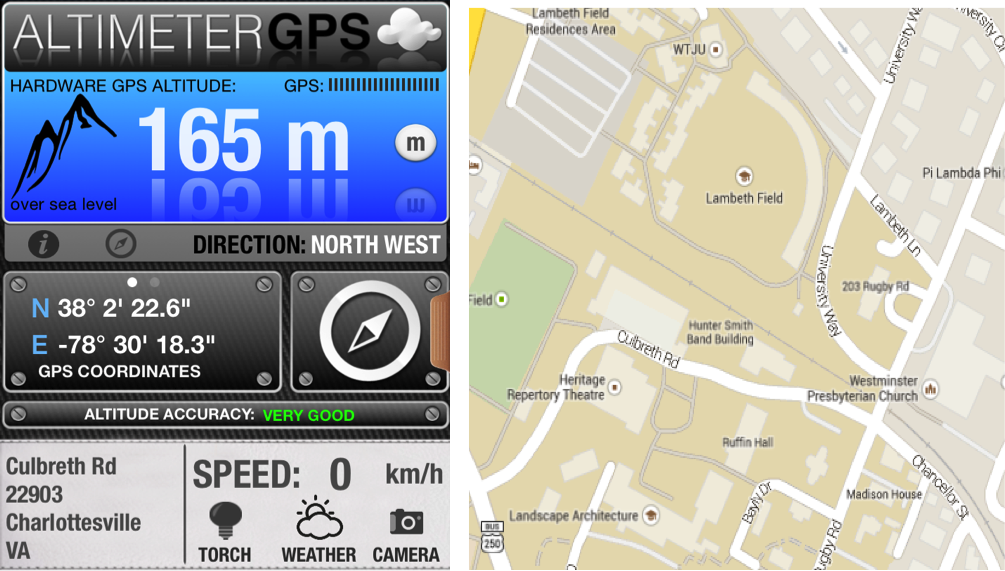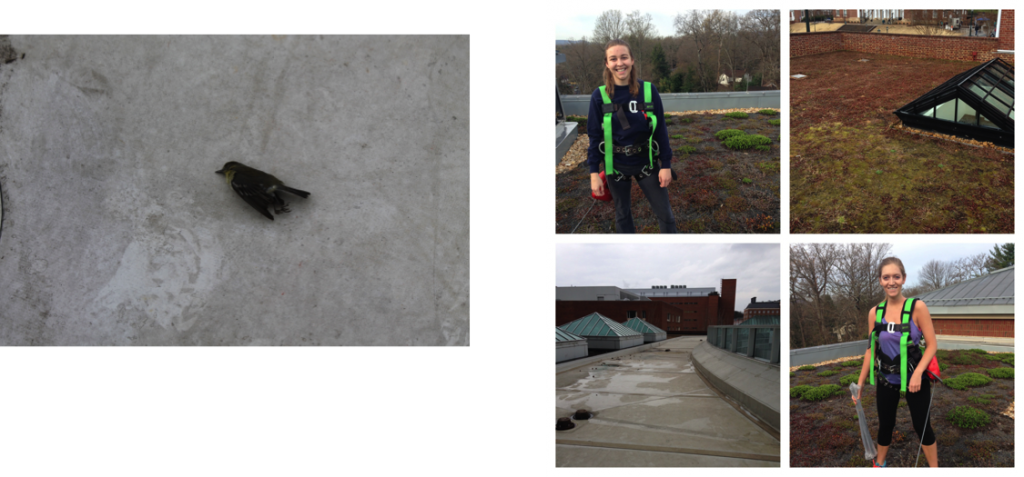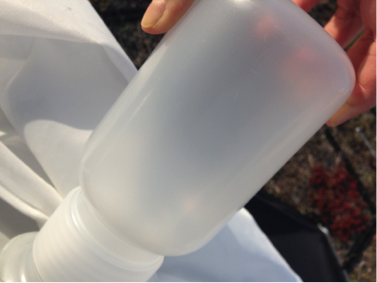The area that ranges from the edges of Culbreth road to the colonnades of Lambeth Field contains a variety of excellent views of natural elements. These views include impressive deciduous and coniferous trees that provide adequate shading over the asphalt surfaces of the parking lots and intersecting roads. Within the area there are multiple housing units as well as the Architecture school that are infused with natural elements. The Architecture school has a modern design of open glass pane windows that allow for wide views of the natural surroundings. The gardens below the school are dotted with trees, tall grasses, and even green walls. Beyond these gardens, the Culbreth parking maintains a great view over Lambeth field as well as an amazing site of the Shenandoah Mountains in the distance.
The map below indicates the wide range of this area and in between the buildings and the roads is an extensive presence of nature. There are constant movements in the trees from nesting birds as well as the occasional Eastern Gray Squirrel that is native to the environment. The Altimeter indicates a high elevation that is indicative of the Charlottesville area. The day that this observation took place was cloudy with light rain which added to the ambience of the natural surroundings.
The photos below illustrate the diverse elements of natural views that are present in this area. There is a green wall that is currently in the development stage as it is part of the newly constructed Architecture school garden. The green walls as well as the tall grasses shown below are clearly visible from any window in the surrounding buildings. The tree besides Culbreth road overlooking Carrs hill field below exemplifies the high level of connection between nature and construction. The panoramic view above the parking garage shows that that in this area despite the proliferation of modern development, the natural environment holds on and is integrated into the entire setting. Therefore the residents and visitors in the area are connected to nature through the serenity of observation with the potential for interaction.
Post by Alexander Geronimos




